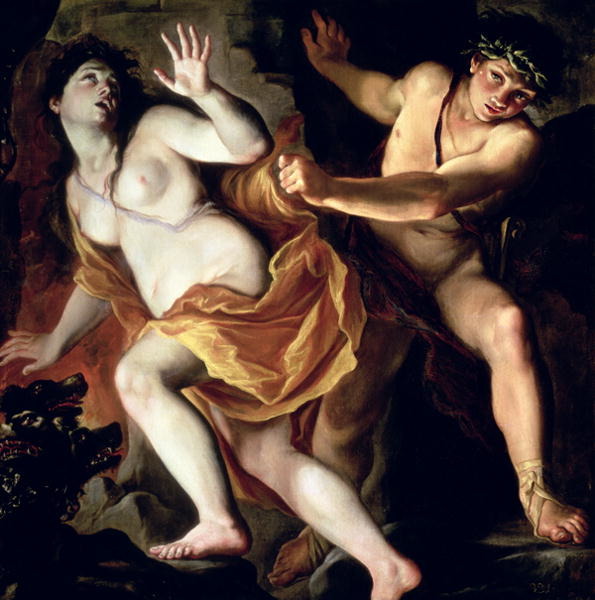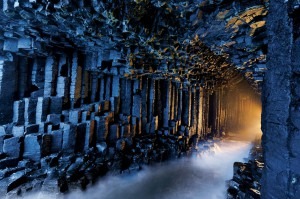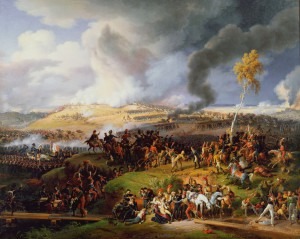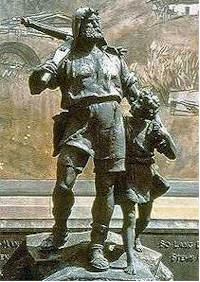
Burrini: Orpheus and Eurydike
Starting with Monteverdi and the beginnings of opera with Orfeo, we are summoned to the opera house by a dramatic flourish of sound: percussion and trumpets tell us to leave our conversations and come to watch the entertainment. This is the antecedent to the Overture.
Monteverdi: Orfeo, Toccata

Fingal’s Cave ©2009 Jim Richardson/National Geographic
Mozart: Don Giovanni: Overture
These overtures work like little symphonies: they are sectional, often follow set forms, and often could be separated from the larger following work. Recordings of Overtures are very common – since they were written to draw the audience’s attention, they do it just as well away from the rest of their operas.
Verdi: La Forza del Destino: Overture
We can tell from the first measures of Verdi’s Overture to La forza del destino that momentous things will be happening!
Wagner: Tristan und Isolde: Prelude

Louis Lejeune: “Battle of Moscow, 7th September 1812”, painted 1822.
And now for the other kind of Overture: the Concert Overture. These works fulfilled a need for dramatic orchestral music that was outside the world of the symphony. Many of these Concert Overtures were built around a pre-existing idea or image and their titles are often a clue to the literary or pictorial precedent. Mendelssohn’s The Hebrides Overture (also known as Fingal’s Cave) was written following the composer’s tour of Scotland in the early 1830s – it doesn’t tell a story but, rather, sets a mood. Other familiar overtures include Tchaikovsky’s 1812 Overture, depicting the battle between the French and the Russians that resulted in the terrible retreat from Moscow suffered by Napoleon’s troops. The music used through the 1812 Overture begins with a Russian Orthodox melody, uses Russian folk melodies and closes with a rousing rendition of God Save the Tsar! after several derisory fragments of the French national anthem, La Marseilles, are broken up by cannon fire.
Tchaikovsky: 1812 Overture (Gergiev)

William Tell Statue
And then there are the Overtures that have lost their operas. Some Overtures have become so famous and their operas so obscure that their Overtures have almost taken on the role of a Concert Overture. The best known of these is the galloping section from the end of the Overture to Rossini’s opera William Tell. When you listen, it’s not until 08:40 that the familiar trumpet calls enter:
William Tell: Overture
With the rise of the Symphonic Poem created by Franz Liszt, the concert overture fell out of favour but it served a very important purpose in orchestral music. We long for stories and these Concert Overtures came pre-equipped with stories that were often absent from regular symphonic works.
